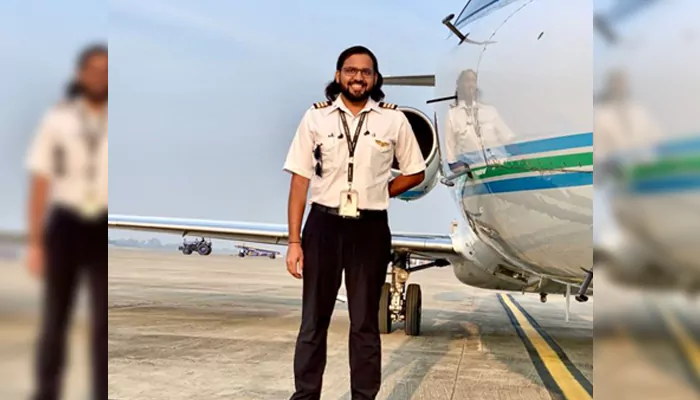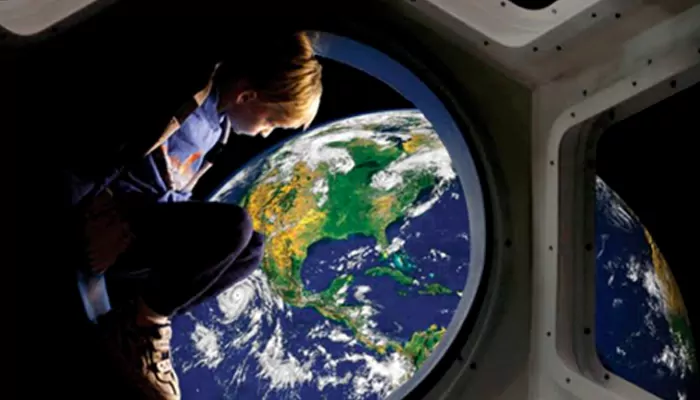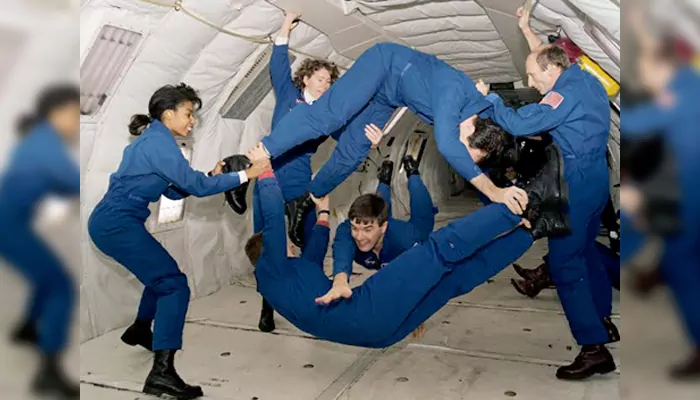Indian Pilot Gopichand Thotakura Makes Historic Voyage with Blue Origin: Here are 5 Space Travel Insights for Tourists
- Admin
- 1 year ago
- 4 minutes read

Gopichand Thotakura is poised to be the inaugural Indian pilot to embark on a space tourism journey. This milestone will occur aboard Blue Origin's NS-25 mission, where Thotakura and five fellow crew members will traverse beyond Earth's atmosphere. Among them is former Air Force Captain Ed Dwight, initially selected by US President John F. Kennedy in 1961 as the first Black astronaut candidate. Despite this distinction, Dwight never had the opportunity to fulfill his dream of space travel. Now, decades later, he joins Thotakura in a historic voyage that symbolizes progress and inclusivity in space exploration.

In the annals of human spaceflight, the select few who ventured into the cosmos were primarily government-trained astronauts. However, the landscape shifted in the early 2000s when pioneering individuals purchased fleeting moments aboard the International Space Station. This marked the dawn of space tourism, heralding a new chapter in exploration. Today, private enterprises such as Virgin Galactic and Blue Origin spearhead ventures beyond Earth's bounds, offering unprecedented opportunities for eager adventurers. This burgeoning industry signals a paradigm shift in space exploration, where the cosmos becomes accessible not only to trained professionals but also to those with the means and curiosity to explore.
Here are some space travel guides shared for tourists by astronauts. Read on to discover what they think you should know about as space tourists.
Savor the Journey: Your Sole Task is to Unwind and Experience the Voyage
When embarking on a suborbital flight with companies like Virgin Galactic or Blue Origin, the journey entails a swift ascent and descent rather than a complete orbit. Passengers relinquish control to the spaceflight provider, ensuring a worry-free experience. Training, typically lasting only a few days, is minimal but may lack the confidence instilled by extensive preparation. Unlike professional astronauts, who undergo rigorous training, tourists rely on trust in their provider. Parazynski suggests seeking advice from previous flyers to alleviate any apprehension. Chiao encourages relaxation and attentiveness during training, assuring that the experience is surprisingly tranquil.
Make Sure You’re Physically and Mentally Fit
Parazynski emphasizes the significance of treating space travel as a monumental life event, akin to the Olympics or Super Bowl. Being physically fit, while not a requirement, greatly enhances the experience due to the body's adaptation to new sensations in space. Mental fitness is equally vital, as it enhances engagement and memory retention during the journey. Through physical fitness, one can achieve mental acuity, leading to a more impactful and memorable experience. Each aspect contributes to the overall preparation and enjoyment of the extraordinary adventure beyond Earth's atmosphere.

The Intensity of G-Forces: Surprising Realities of Launch and Reentry
Experiencing the powerful G-forces of a rocket launch is like a thrilling ride, but more intense. Astronauts endure immense pressure, yet it's manageable. Training includes centrifugal runs to prepare for the sensation. Relaxing muscles is crucial during launch and reentry, easing the strain on the body. "The G-forces aren't as harsh as in movies," says Chiao, emphasizing the importance of physical relaxation. Being flexible and allowing your body to sink into the launch couch helps alleviate discomfort. Remember to keep limbs inside for safety. It's a remarkable experience, requiring physical and mental preparation for the journey beyond.
Prepare for Weightlessness: Consider Booking a Zero-Gravity Flight
Experiencing weightlessness, a sensation typically reserved for astronauts, is now within reach on Earth. Through zero-gravity flights offered by companies like the Zero Gravity Corporation, anyone can float freely in simulated space-like conditions. Unlike skydiving or roller coasters where you feel the sensation of falling, in a zero-G flight, the aircraft itself is falling alongside passengers, creating a truly weightless environment. Astronauts recommend this experience as a precursor to space travel, offering insights into movement and sensations. It's an opportunity to demystify the unknowns of space and prepare oneself for the journey beyond Earth's atmosphere.

Adjusting to Zero Gravity: Navigating Potential Dizziness
When gravity is removed for an extended period, the body reacts differently, leading to symptoms like dizziness and nausea. "Without gravity, fluids rise to your torso, creating a sensation akin to standing on your head," explains Chiao. However, on suborbital flights, you might fare better. "Initial excitement and adrenaline can mask discomfort," says Chiao. "By the time symptoms may arise, it's typically time to re-enter Earth's atmosphere." This means the worst effects of weightlessness might be avoided, offering a more comfortable journey for space tourists.












